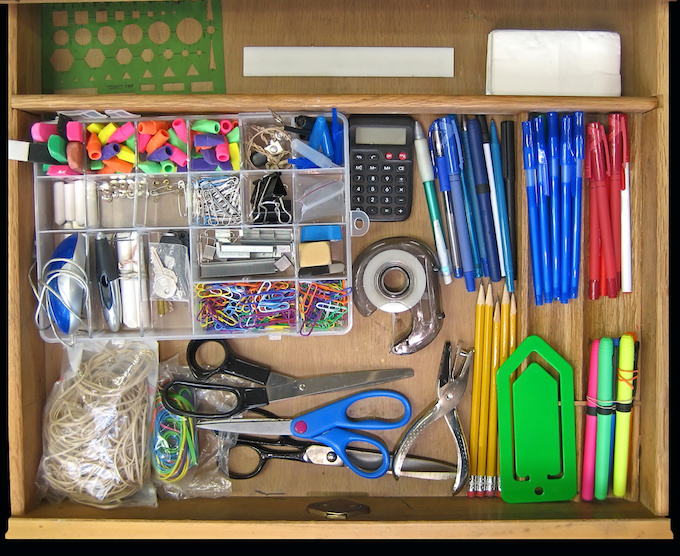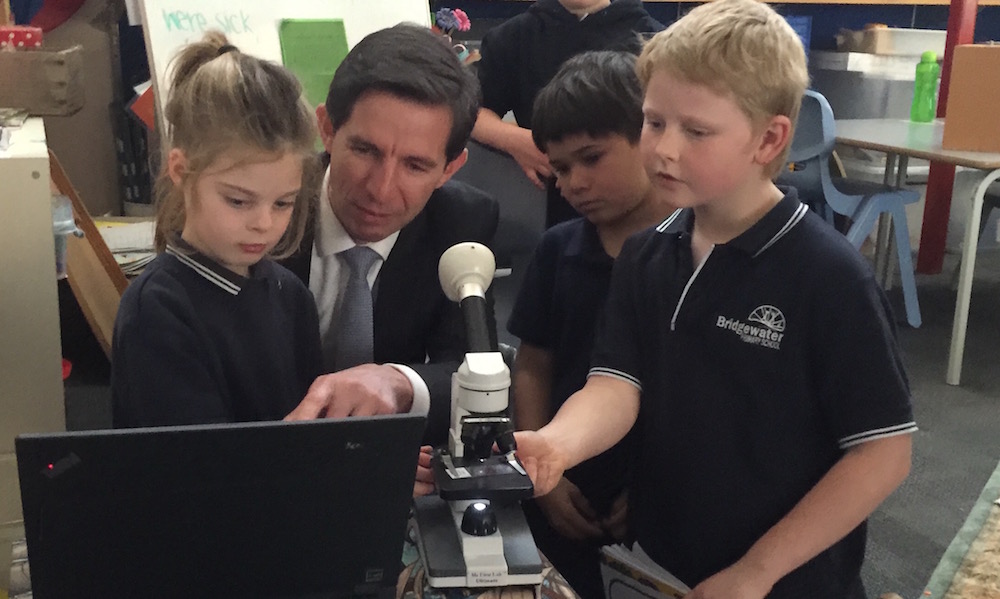How to engage students in last lessons of the day

Lessons at the end of the day can be a bit of a challenge, especially if you teach a core subject like math or science.
Secondary teacher Emily Aslin takes us through her hot tips…
The end of the school day is an odd time – everyone is a bit tired, but also a bit excited. I’ve found as a core-subject teacher that it’s often that last lesson that has the most behaviour problems, and is the hardest to engage students meaningfully.
Here are some tried and tested ideas for getting through the content, engaging your students, and keeping everyone happy in that last lesson of the day!
Videos or worksheets
I’ll start off with the stock-standard response to a lazy afternoon – videos or worksheets.
I try to use this tactic sparingly since it is so popular. You never know how many other videos and worksheets your students have done that week, or even that day (particularly toward the end of the term or the end of the year).
If you are going down this route, make sure you choose worksheets that have a bit of fun to them, a bit of challenge, or incorporate some form of puzzle. Extra points if it involves a physical activity (even seniors enjoy a good old cut-and-paste activity every now and then, as long as it’s complex enough). Try to find novel ones, even if they are still building essential or simple skills.
Hands-on activities
This is a bit of a no-brainer. If you can, plan some activities that will have students working with their hands as well as their brains. Depending on your class, you could even have them up and out of their seats in order to complete tasks or demonstrate their knowledge. Any of the suggestions in this article can be tailored to be hands-on.
Being a science teacher, this is pretty easy to achieve if we happen to be in the lab. At my school we are timetabled one lesson in the lab per week, and it was always a bonus if it was last lesson later in the week. Planning hands-on activities in the form of experiments in the lab is a regular occurrence, and the perfect way to explore the content in a different way.
In math you can always try to represent the content using physical models – simple things like blocks or counters can be used for most concepts. If you can’t physically model the math, try and have students come and do some work on the board to get them out of their seats. Presenting their working in a different way like this, or on individual whiteboards or computers/tablets, can provide a level of novelty that can keep students engaged beyond the time they would normally tap out.
Get out of the classroom
It’s a common misconception that learning can only happen inside the classroom. Admin teams in particular seem to think that if students are out of the room they are far too distracted to learn, or that no ‘real’ learning is happening. Prove them wrong!
Take your students out of the classroom and into the school grounds to explore a concept, which can be quite exciting (my confidence in doing this really improved after doing a series of professional development in outdoor learning – you can read about them here and here). If you are concerned about things like distractions, students walking off, etc, give those articles a read – those problems are addressed there in practical ways.
There are infinite learning opportunities outside – simple things like looking at plants and animals for adaptations, exploring the school ecosystems, using the basketball courts or school buildings for math measurements, real-life drawings, even just sitting under a tree to read through the content in a textbook. The options are only limited by your surroundings and your imagination! At my school some of the English department would take their students out into the grounds with snippits of inspiring poems that the students themselves had written and write them on the concrete in chalk (so it would eventually wash away or be walked off). Seeing the reactions from other students when they went out at lunch or the end of the day is always fantastic!
Get online
If you have access at your school, get your students online. What you can do once there is endless!
Have a look for online games that relate to your content. Your students will love jumping online and having an excuse to play a game there for a while, regardless of whether it’s particularly fun or not. If you want something a bit more structured, look for simulations instead of games. There are thousands of simulations out there, and most of them will have worksheets you can use (usually made by different people, so make sure once you’ve found your simulation you do a separate search for lesson plans/worksheets/etc).
You can also do a traditional web-quest – search for a ready-made one to save yourself potentially hours of planning time!
A good old fashioned research lesson can be a good option. Give students a broad topic, a specific set of questions, or a combination of both, then let them loose to discover what they can. I love doing this at the beginning of a unit – give them the overall topic, or an individual facet of it, and have them discover as much about it as possible. They can then teach others about their newfound knowledge either in the following lesson, or as their individual topic is approached throughout the unit. Make sure your students know how to effectively research online though – take time to actually teach them good searching techniques and have them evaluate the websites they access for added educational benefit.
Consolidation
Having one lesson, or part of one lesson, a week as consolidation can work wonders for your students. Often they are disinclined to revise work outside of class when it’s not close to an exam or assessment item, so giving them dedicated consolidation time can really improve their understanding of and comfort with the content.
During this time students could catch up on work they have missed for whatever reason, and finish work that hasn’t been completed throughout the week (not homework though, just work that was set in class). Or you could prepare set work for your students to use, such as consolidation worksheets or problem sets. Otherwise you can let them work as they see fit – go with what works for you and your class. One of my colleagues used to allow all of these options, giving students a choice but insisting on a worksheet if they were proving to be a bit reluctant to work. She would also put on music in the background, and have things like coloured pencils available to make the work seem a bit more exciting and relaxed.
I like to give the students options of what they will work on during this time. In math, for example, I will allow them to re-hash any content we’ve worked on since the last consolidation session – they can either continue with set problems, re-do ones they struggled with, or move ahead to more complex problems.
This isn’t a time to jump ahead into new work, tempting as it might be for some of the more able students. It’s a time to really dig deep into their understanding of the current content. If they already have a good handle on it, present them with different challenges or problems based on the current content, or have them create a learning piece that could help other students who are struggling. If they are so inclined, you could also have them go around and help other students who haven’t quite mastered the content yet.
Bribes
Bribery is viewed with extremes of opinion. If it works for you though, I say go for it.
Bribery to complete work could come in the form of stickers, free time, food (which works particularly well in low socio-economic classes due to the likelihood that your students may not have eaten much that day). Anything that works for your particular students.
If you’re going to go down this route, make sure you are aligning with your school preferences – you don’t want to inadvertently be braking any rules. Also make the decision beforehand of how often you will use this tactic. Is it going to happen every week? Once a term? Only a one-off? Whatever you decide, you need to keep it consistent and fair for all of the students in your class. Perhaps they can choose a reward – not everyone is super excited by the prospect of a free pencil.
Complex Problems
You could give your students one task that will take them the majority of the lesson to complete. This works particularly well in pairs or small groups, as it gives them an excuse to talk and interact while remaining on task.
I’ve found this works just as well for consolidation type exercises as it does for brand new content, high ability and low ability students, as long as you frame and scaffold it appropriately for your class.
Try to make sure the activity will take the same amount of time no matter the ability level of your students, that way you avoid having some finished with nothing left to do while others are still struggling along. You could do this by having a task menu (where students pick what they want to complete), or by having a number of extension activities that they can access when they have finished the previous ones.
One of the best versions of this I’ve seen was in a year 7 math lesson. The teacher had set up a type of scavenger hunt – different complex problems were stuck up around the room, and students had to correctly answer one to solve that ‘problem’ and get the hint for which problem to move onto next. It took most of the students most of the lesson to work their way around the whole room. Another couple of versions of this had the students solving problems where the answers told them which puzzle pieces to use to create a picture, or the answers formed a code which ‘unlocked’ a phrase or a prize.
The point is to have something that is challenging and will last the whole lesson, without becoming tedious, frustrating or boring.
Games
Make the lesson fun by playing games!
You could make them content-specific (like the puzzles mentioned above), or use your teacher judgement to create a rough link to the content. With my troublesome year 9 math class last year I would occasionally let them play cards on our Friday afternoon lesson – you can always justify card games in math!
You could always do a quiz – individual, pairs, or teams. Tailor it like a trivia night to make it a bit more competitive, or even have your students write the questions you’ll then use. Similar to this, have a true/false quick quiz (Rhi likes to turn it into a bit of a silly game by having students stand up and put their hands on their heads for true, and on their butt for false), or play tabboo/mile-a-minute.
If any of these games don’t take your fancy, or you’ve used them to death, do a quick Google search for ready-made games for your topic. You might be surprised what other teachers have come up with! If possible print out and laminate the necessary resources so you can use them again or share them with other classes.
You could even take it a step further and have your students work over a number of weeks to create their own game based on the content, like I did for this assessment piece. Students have a blast creating board or card games, and have even more fun playing the ones their peers have made. You could essentially have this progress over an entire term, especially if you allow them to play and refine on a regular basis. It’s such a great and novel way for the students to consolidate their knowledge, or even encourage them to teach themselves some of the content in advance.
Quiet time
I like to use this one every now and then as a complete contrast.
Simply dedicate the lesson to some quiet time for your students. You might be surprised how much they appreciate it (at least some of them will – we often tailor our lessons to the loudest and most boisterous students, forgetting about those who really prefer calm and quiet and routine).
Give your students individual tasks to complete (a perfect time to really differentiate), things like reading tasks.
The point of this is that the room is quiet, calm, and everyone is pretty much focused on their work. You could incorporate almost any of the above strategies here, as suited to your class.
What do you like to do in your end-of-the-day lessons?







